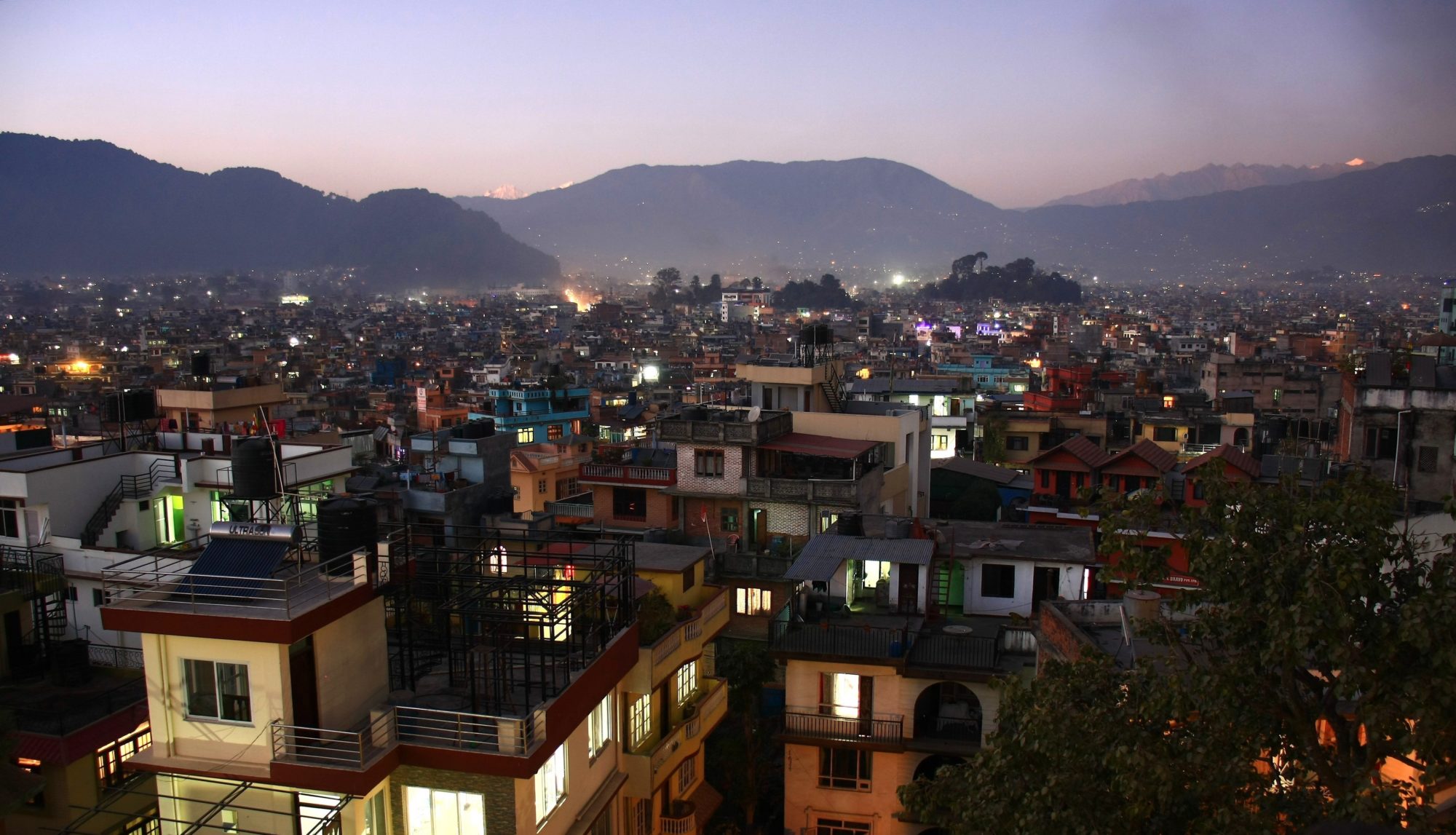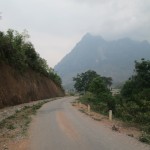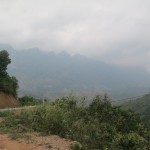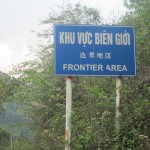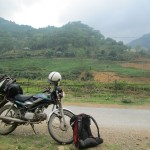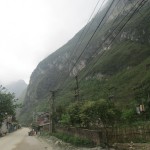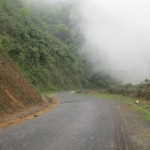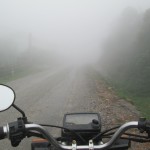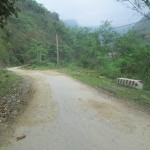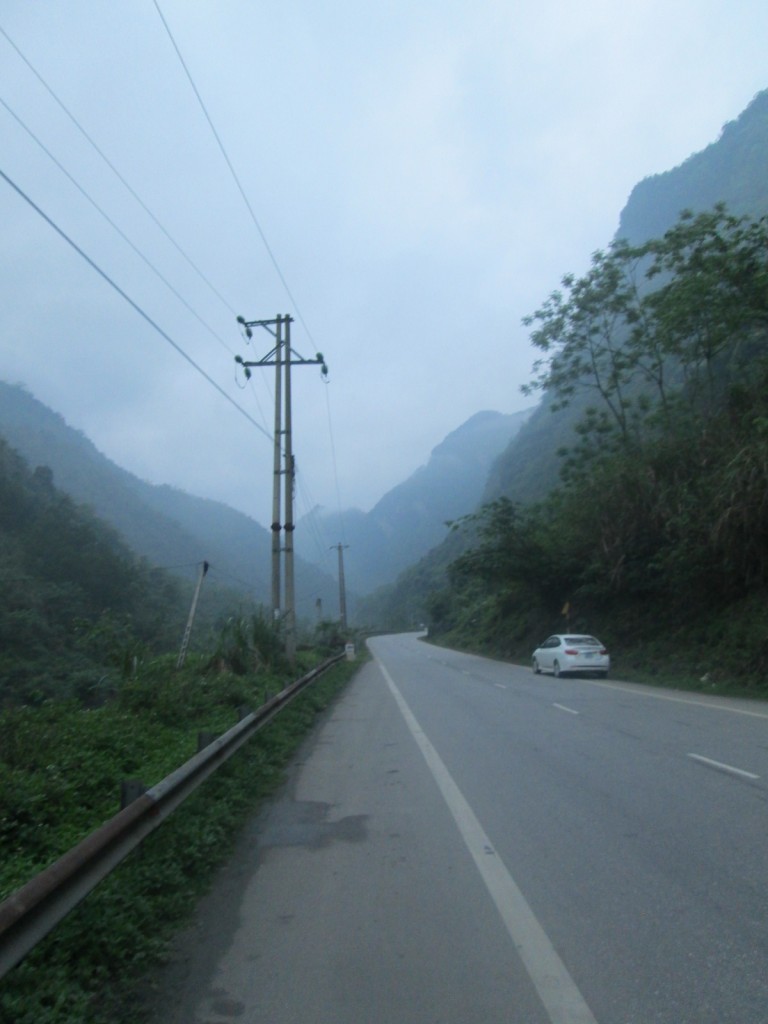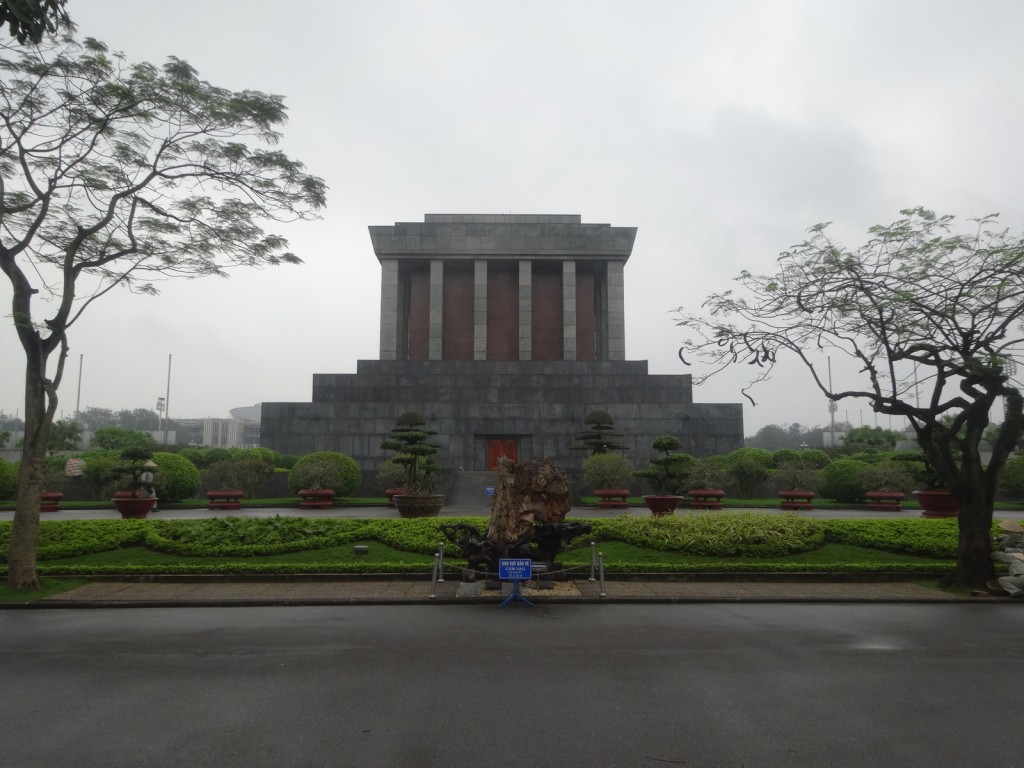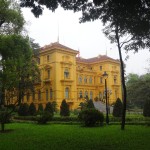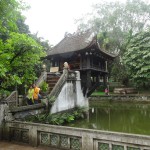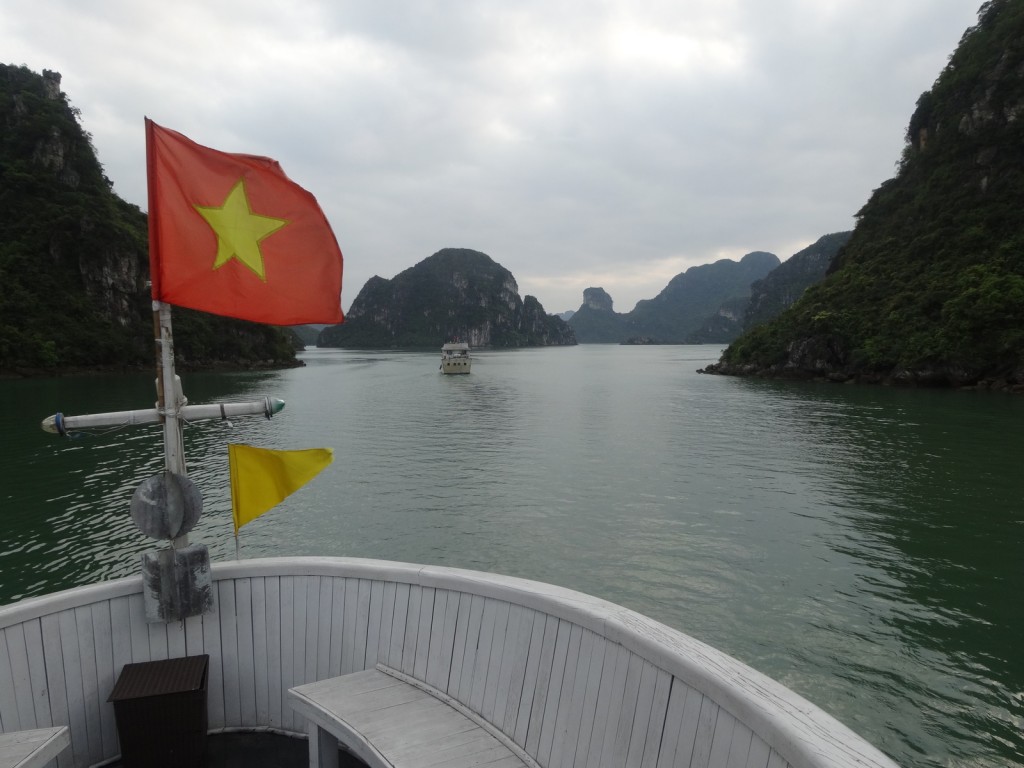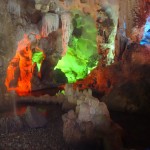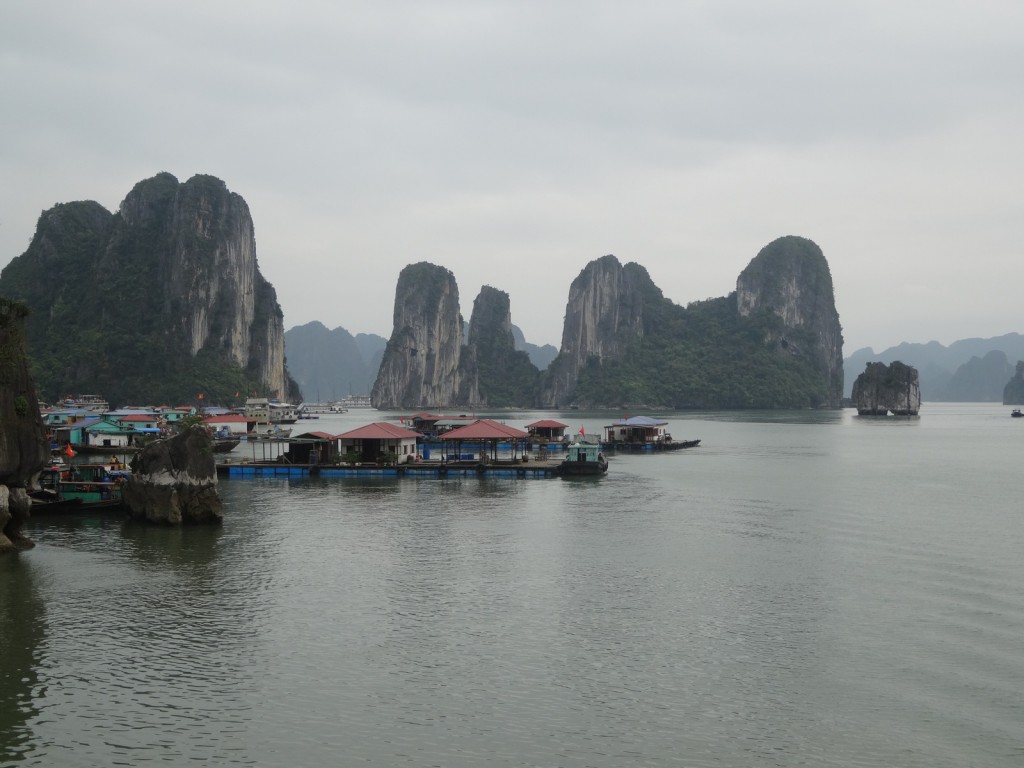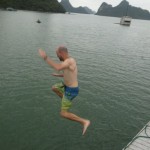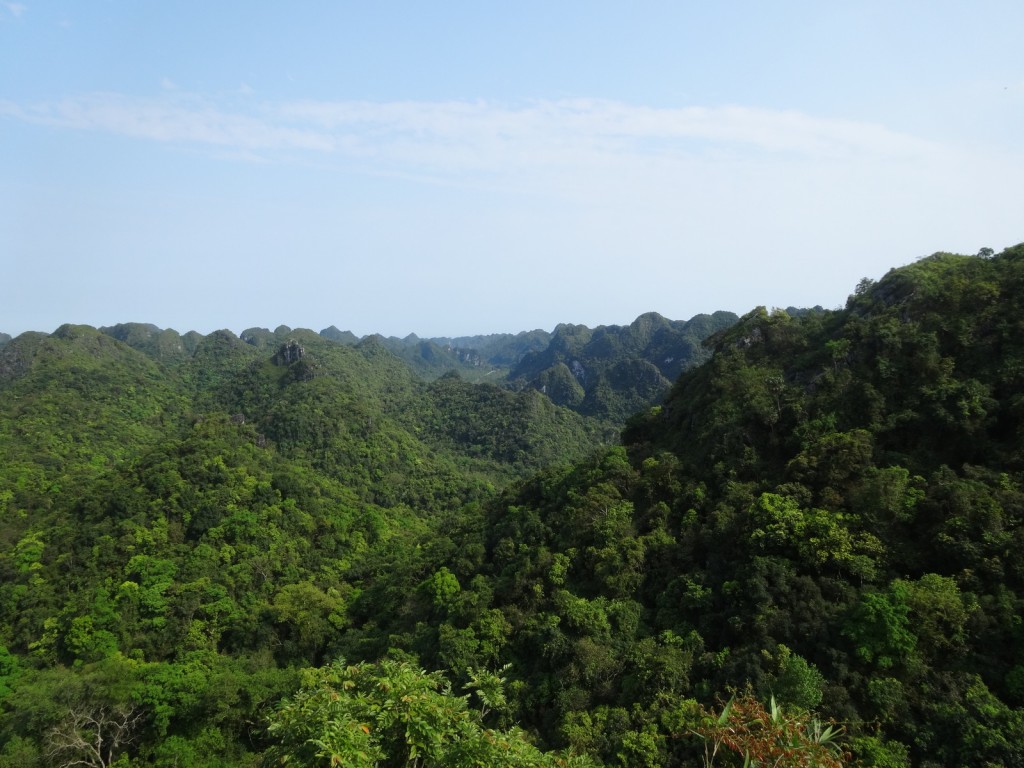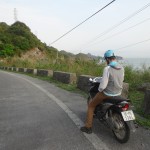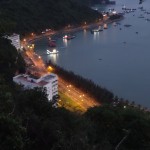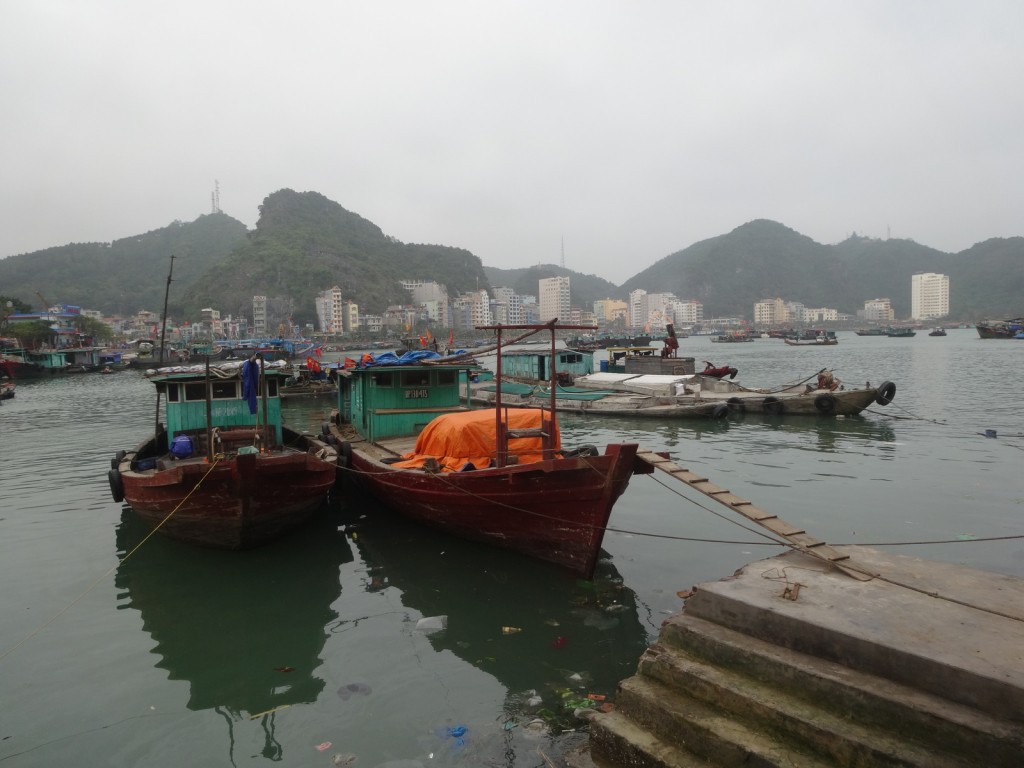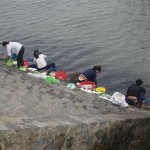Weather: all except snow
Departure: 10h00
Arrival: 22h
Date: 12/04/14

When it comes to craziness, this day takes the crown so far. My plan was to make it to north and the most direct way was on smaller secondary road and I did take it. The beginning of the journey started off relatively uneventful but as soon as I hit my first shortcut, the surface deteriorated into a mix of worn pavement and gravel. I would remain on this road for one hour or two until I hit the clouds. There the pavement became more continuous but the visibility dropped down to 15 meters or so with the constant drizzle usually accompanying high altitude fog in which I would stay for another two hours. The way down from the peaks is when I started to really enjoy this day. The scenery was spectacular. For a while at least because after lunch, I got some altitude again until on a pass I came head to head with three large vehicles immobilized in the middle of the road. A truck had broken down, another one had gotten bogged down while trying to pass it and on trying to help it out using a nearby excavator, it tipped over and was now lying precariously on the excavator’s shovel. Good luck guys! Two french tourists told me they had seen motorcycles cross around the mess so I there I went. Progressively, villages became more and more of the ethnic minority type, with most habitations being made from local wood and bamboo and women wearing the traditional attire.


The road behind the accident was even better than previously and in little time I had made it to Bao Lac. It was already 16h30 but after refueling and withdrawing money from an ATM (I realized they were few and far between and had little funds to cover any unforeseen issues), I somehow thought it was a good idea to push a bit further to Meo Vac. A bit further? Yes on the map it looked sort of close but it seems I just don’t learn. It already took me a while to find the correct path, once I realized it was now too late to turn around, it was night, I had been through kilometers and kilometers of dirt roads, had gone down a trail just a tad bit larger than a foot path and was now in front of a river with two kids offering me a passage across on a makeshift bamboo raft. Earlier, upon me asking a passer by if I was on the correct direction to Meo Vac, the man gave me a brick of soy milk and told me that yes, I was going the right way but that it was far and that I should go bed. No beds around here my friend and I was ready to challenge a Viet person’s conception of far. I failed, it was far.

Then the man that was waiting on the bamboo raft for his crossing walked up to me and through a gesture, I understood that he was going to Meo Vac as well. I decided to cross; that was really the point of mo return I guess. On the other side, through an offering of a cigarette, I made sure the guy was cool with me following him. Through altitude and poor maintenance, my motorcycle had since the middle of the afternoon became extremely pushy uphills and now that I had to climb a steep path, it was just not cooperating. In order to get it up, I had to keep the gas handle fully down, use the clutch to minimize the torque on the engine and do the rest of the effort myself. At the top of the hill, my guide was waiting for me. We kept going for a coupe of minutes and then he stopped at a random wooden shack on the side of the road. In spite of me trying to inform him that I wanted to go to Meo Vac and that this could not possibly be it, he convinced me to enter the house. There, a bunch of local minority people were sitting on the ground or on short stools, having what I thought was tea and smoking tobacco in a water pipe. The women, dressed in their costumes, were singing. Two younger men were trying to fix a cell phone and my guide was forcing me to take a seat all while offering me that “tea”, which was actually some sort of vodka. All round bags of rice, a cooking fire and some chickens running around. Unusual experience, whoever brought me here was enjoying some shots but still had his coat on and his keys in his hand so I finally understood that this was just a stopover. Oh well, I felt a bit uneasy, but decided to integrate as much as I could.

As I was sipping on my cup of vodka, one guy was trying to match me with another girl. No thanks, Then they decided to poke some fun at my bald head. In spite of me explaining that it had migrated down my face into a beard (something they did not have), they nonetheless decided to cover it up with a beret one man was wearing. Finally, after a session of picture taking and one last shot (I only had two and wanted none, but they were very insisting), I was back outside on my bike following my guide who at that point had a lady on the back of his motorcycle and was gunning it on the rocky road all while drunk. On the side of the road I caught a glimpse of a kilometric marker bearing the name of my destination at an estimated distance of 20 kilometers. Finally! My guide took a side road and I kept going but not before stopping at a little general store that was still open to load up on water and other supplies for a night I was still expecting to spend outside. 20 kilometers can be a very long way in these parts, especially that there is no longer anyone outside to ask for directions (as soon as night falls everyone is in bed) and that roads are not really marked.
Determined to get to my objective no matter what, I drove for another hour until finally I saw the glow of a large town reflecting on the cloud cover overhead. After tracking back from having taken the wrong branch of a fork, I spotted a marker and soon after, I was downtown. I circled around once to check my options and luckily, some guesthouses were still open. During checking-in, the receptionist made me understand that I needed a permit to be in the border region. I did not know that but for an extra 210 000 dongs I made certain it was not a scam. This had been an extremely long day, it was 22:00 hrs which meant I had been riding for 12 hours with very little interruptions. I needed a beer.
I sat down at a street bar and ordered a drink. It was not before long that I had caught the interest of a group of giggly teenagers. They all came down to my table and offered me a bamboo water pipe. This time though, it did not contain tobacco but weed, which by the looks of it appears to grow freely in the region. This explains the giggliness. The good guest that I am took a couple drags and after an hour of discussing across on Google translator, I took my leave from the group, had a bowl a pho and got to my room to write this journal. A quick check on Google maps indicated that there were two roads to Mae Vac and evidently, I had taken the very rugged one that was cut in half by a river, some kilometers after Bao Lac, there was another way that was good enough for buses to pass.
Things have a way of working out. Part of me wished I would have had to sleep outside as in spite of the darkness, I could make up a scenery that at sunrise would have been absolutely gorgeous.
Apparently, this town is famous for its colourful Sunday market, where the locals come down to sell everything from cattle to flowers. I’ll see what’s up tomorrow. Next up though is the Meo Var – Dang Van road section, which apparently had few rivals around this country when it comes to beauty.
